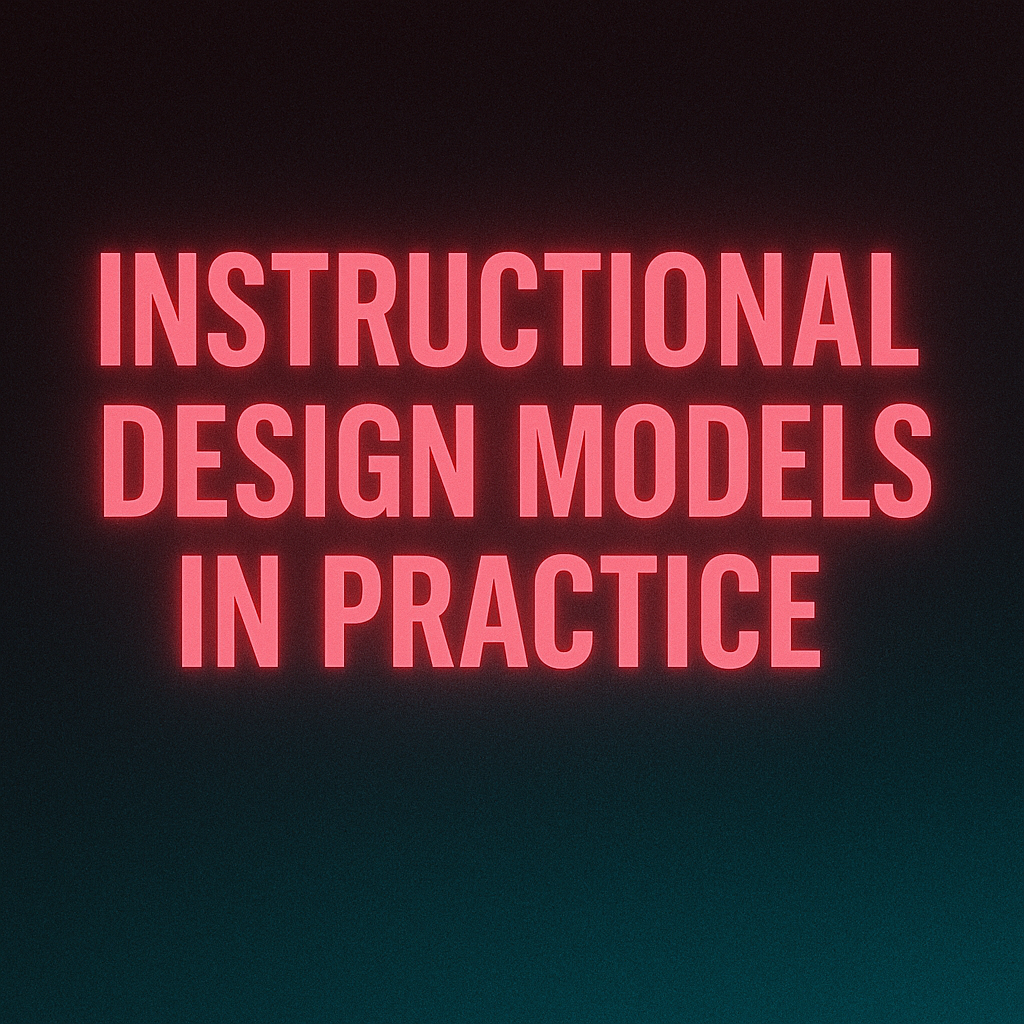ADDIE and the Reality: How I Actually Use Instructional Design Models
ADDIE was everywhere when I first stepped into instructional design. Not long after, I crossed paths with SAM, Gagné’s Nine Events, Bloom’s Taxonomy, and the Four Step Method. On paper, each one seemed well-structured and convincing. In practice, I’ve never followed any of them to the letter.
That isn’t a criticism of the models, and I’m not denying they have value. But building training in the real world rarely lines up with theory. Timelines shrink, subject-matter experts are stretched thin, and learners still need something useful in their hands sooner rather than later.
A Quick Tour of the Big Models
ADDIE
A step-by-step process: analyze needs, design materials, develop them, implement, then evaluate.
SAM (Successive Approximation Model)
An iterative cycle: build something quick, test it, refine it, repeat.
Gagné’s Nine Events of Instruction
A checklist for lessons: capture attention, present content, give practice, offer feedback, check performance.
Bloom's Taxonomy
A way of classifying learning objectives. At the bottom: remembering and understanding. At the top: analyzing, evaluating, creating. The idea is to push learners beyond rote memorization.
Four Step Method of Instruction
A training sequence: prepare learners, present material, let them apply it, then evaluate how they did.

What These Models Get Right
I don’t dismiss the models. They’ve stuck around because they remind us to:
- Set clear learning outcomes.
- Break instruction into stages instead of dumping information.
- Think about practice and evaluation, not just presentation.
- Keep learners’ experience in mind.
They give us a shared vocabulary and help ensure key details aren’t missed.
Where They Fall Short
The problem is that in practice, the full model often feels too heavy:
- Long design documents that no one but the designer ever reads.
- Approval cycles that stall projects before they get off the ground.
- Stakeholders who want “something” next week, not six months from now.
By the time you’ve documented every outcome and mapped every event, the content’s already outdated.
What I Actually Use
In reality, my process looks a lot like rapid prototyping. I sketch ideas quickly, usually as bullets. Then I put together a rough version, try it out with an SME or walk through it myself, and refine from there.
Instead of a polished design document, I rely on:
- Bulleted outcomes for each project.
- Quick notes on what belongs in a guide versus a reference.
- Fast check-ins with SMEs instead of long sign-off cycles.
- Iteration while I build, not just evaluation at the end.
That approach puts usable material in front of learners faster and leaves room to adjust after I see how people actually use it.
Instructional designers might notice the overlap with the Successive Approximation Model (SAM). SAM is essentially rapid prototyping adapted for learning: build, test, refine, repeat. I don’t follow SAM step by step, but I can sure appreciate the spirit of it.
The Tech Comm Parallel
In technical communication, there are also “ideal” processes for building documentation. Formal content models, structured authoring systems, and governance workflows are there to ensure consistency and coverage.
In practice, many writers simplify or adapt these processes. We don’t always run every project through a maturity model or build lengthy design docs before drafting. Instead, we pull out the pieces that help most, like templates, terminology standards, and quick review cycles, and keep moving.
Context Matters
That said, context matters. In regulated industries like medical devices, aviation, or finance, following a documented process isn’t optional. Audit trails, version control, and methodical workflows are part of the product. In those environments, rigor is what makes the docs usable and defensible.
For most other situations, the value lies in knowing the models, then applying the parts that actually move the work forward. The ultimate goal in both fields is the same: to provide documentation that helps someone accomplish a task.
Final Thought
The value of instructional design models isn’t in following them to the letter. It’s in knowing the steps, then choosing which ones to emphasize for the project at hand.
ADDIE, SAM, Gagné, Bloom, and the Four Step Method are all useful lenses. But in practice, the lighter and more iterative the process, the better it works. That’s not disrespecting the models, it’s fitting them into the real world.


